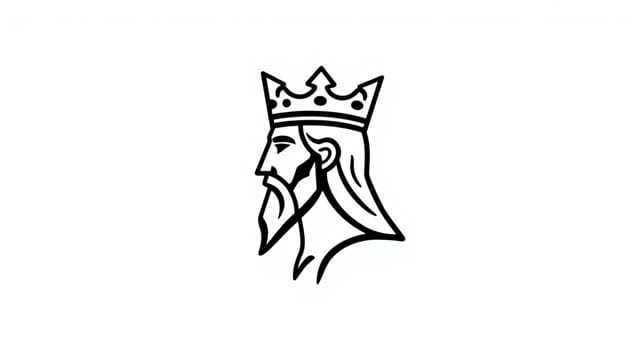King of Phrygia Problem
The ancient kingdom of Phrygia, located in what is now modern-day Turkey, is best known for one of the most enduring legends of antiquity: the tale of the King of Phrygia and his puzzling dilemma. This story is deeply connected with myth, symbolism, and problem-solving, and has fascinated historians, scholars, and philosophers for centuries. Often referred to as the Gordian Knot problem, it represents a moment in history where leadership, prophecy, and unconventional thinking came together in an unforgettable way. Understanding the King of Phrygia problem offers insights into ancient mythology, Greek conquest, and the importance of bold decisions in the face of complex challenges.
Origins of Phrygia and Its Kings
Phrygia was an ancient Indo-European kingdom in central Anatolia. Known for its rich culture and unique language, the region gained prominence during the first millennium BCE. The most legendary kings of Phrygia were Gordias and his son Midas, both of whom are heavily featured in Greek mythology. Gordias, a humble peasant, became king in an extraordinary way that began with a prophecy.
The Prophecy and Rise of Gordias
According to the legend, the Phrygians had no ruler and sought guidance from an oracle. The oracle declared that the next man to enter the city on an ox cart would become king. That man was Gordias. Fulfilling the prophecy, he was made king on the spot. In gratitude, he dedicated his cart to the gods and tied it to a post using a highly intricate knot.
This knot would later become central to the King of Phrygia problem known widely as the Gordian Knot.
The Gordian Knot: A Problem with No Obvious Solution
The Gordian Knot was no ordinary binding. It was an elaborate and tightly entangled rope made from cornel bark, so ingeniously twisted and interwoven that no one could determine where it began or ended. This knot became an object of fascination, both religious and political. An oracle declared that whoever could untie the knot would rule all of Asia.
- Symbol of destiny: The knot came to represent fate, entanglement, and the challenges that stand in the way of greatness.
- Challenge to rulers: Many attempted to solve it, but none could unravel its complexity. It became a metaphor for unsolvable problems.
Alexander the Great’s Encounter with the Knot
In 333 BCE, Alexander the Great entered the city of Gordium, the ancient capital of Phrygia. There he encountered the famed knot. Desiring to fulfill the prophecy and assert his destiny, he attempted to untie it. After struggling, Alexander famously declared that it did not matter how the knot was undone. He drew his sword and sliced through it with a single stroke.
Whether this story is literal or metaphorical, it demonstrates a new way of thinking solving complex problems not by traditional methods, but by rethinking the rules entirely. The Gordian solution has since been used as a symbol for innovative or decisive problem-solving.
Interpreting the King of Phrygia Problem
Philosophical Interpretations
The King of Phrygia problem is more than a tale of physical knots. It raises philosophical questions about how problems should be approached. Should challenges be tackled patiently and methodically? Or is it more effective to cut through complexity with radical action?
The story is often used in moral and philosophical debates as an allegory for:
- Decisive leadership: A bold leader doesn’t always follow tradition but chooses a direct route to results.
- Thinking outside the box: The solution to difficult problems may lie in changing perspectives.
- Challenging norms: Cultural and societal expectations can be barriers to effective solutions.
Political and Military Symbolism
Alexander’s act is frequently referenced in political and military strategy. His approach to the Gordian Knot exemplifies how rapid and unconventional tactics can bring success where conventional methods fail. For military leaders, the story reinforces the value of speed, surprise, and audacity in achieving objectives.
Legacy of the Gordian Knot
The King of Phrygia’s problem continues to influence various fields today, far beyond the world of ancient myth. It appears in business strategies, legal debates, educational philosophy, and even in modern engineering or computational theory. Whenever a complex situation is overcome through bold or creative means, it echoes Alexander’s solution to the ancient problem.
Modern Applications
The metaphor of the Gordian Knot has been applied to:
- Corporate strategy: Leaders making swift decisions in markets dominated by complexity.
- Legal reform: Judges and lawmakers cutting through outdated systems with progressive laws.
- Technology: Programmers and engineers finding elegant workarounds to systemic problems.
Historical Questions and Myths
Historians have long debated whether the story of Alexander and the Gordian Knot is literal or symbolic. Some suggest it was a tale crafted by later writers to elevate Alexander’s legend. Others argue that the knot may have had religious significance, and his act of cutting it was more of a political message than a genuine attempt to solve a puzzle.
Regardless of its factual accuracy, the story’s power lies in its message. The King of Phrygia problem challenges us to question how we define solutions and whether we sometimes make problems harder than they need to be.
The legend of the King of Phrygia problem, embodied in the Gordian Knot, remains one of the most captivating symbols of ancient storytelling. It is a tale not just of ropes and prophecy but of leadership, strategy, and innovation. Whether viewed as myth, metaphor, or moral lesson, the story continues to inspire thinkers and decision-makers around the world. The King of Phrygia’s seemingly impossible knot reminds us that even the most tangled problems can be solved with the right perspective and the courage to act differently.
